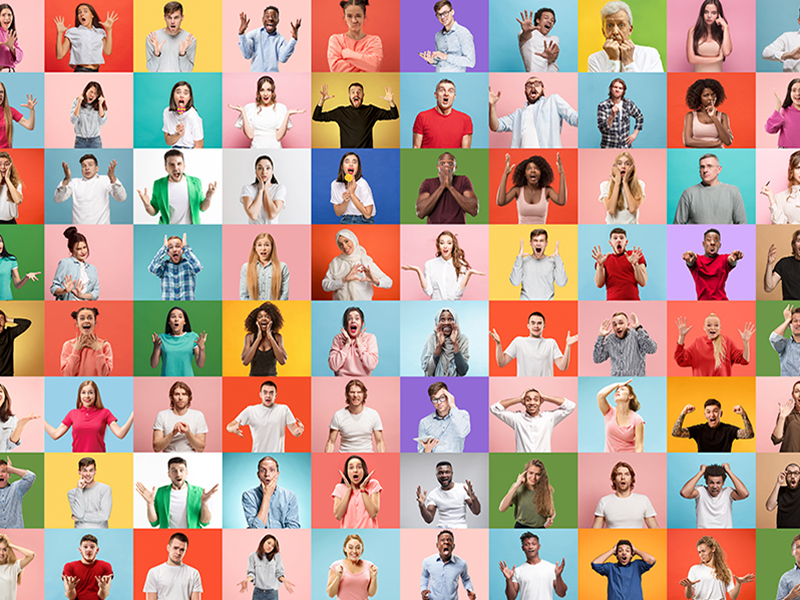

Words and imagery have the power to connect, evoke emotion and elicit a reaction. They also have the power to be inclusive, or exclusive, and employers can now harness that power for good to ensure they’re creating an inclusive workplace for everyone.
If you received an email written in language you couldn’t relate to, would you take the time to read it? Not likely. You’d probably just hit delete and move on. Right? The same scenario could be applied to communications about employee rewards programs. If employees don’t relate to the communication sent by their employers or it makes them feel excluded, unappreciated or unacknowledged, that can affect their engagement, perceived value and happiness in the workplace.
Read: How to communicate the value of a benefits plan to employees
Many organizations have now stated commitments to diversity, equity and inclusion strategies and goals, yet employers are still struggling with how to make it a tangible part of the everyday employee experience — for every person. How can leaders foster a genuine culture of inclusion that resonates across an organization and allows communications to be seen and appreciated by all staff? Here’s some steps employers can take to start moving in the right direction today.
Use inclusive language
Using gender-neutral language is a small change that can make a world of difference to an individual who might feel overlooked in its absence. For instance, using the terms male and female on enrolment forms or company surveys to someone who identifies as non-binary just isn’t going to resonate. Often, when adding a third gender identity, non-binary is the preferred terminology; using the word ‘other’ can be frowned upon as nobody wants to be seen as an other. Instead, consider language that uses ‘you’ and ‘your’ as this captures everyone and is far more personal and engaging.
Another approach to avoiding gender-specific words when communicating with employees is to forgo the use of ‘his’ or ‘her’ for ‘they’ and also consider avoiding ‘men’ and ‘women’ by opting for more gender-neutral terms like team members, friends or colleagues. It’s that simple to implement. Organizations have many more options when they step outside the traditional gender dichotomy. Making these changes won’t alter the core of the messages employers are trying to convey. If anything, using gender-neutral language can make company communications resonate even more and help employees better engage with the communications around their pension and benefits programs.
Read: Pride Month: How employers can create a more inclusive work culture
Use reflective imagery
The same can be said about company imagery. If an employee doesn’t feel represented in images accompanying company communications, how can they see the value in the messaging? Here’s some tips to consider:
- Employers should be aware of both singular and family images — these should be diverse in household makeup, age, gender, race, ability and sexual orientation; and
- Those crafting company communications should be mindful of the message within a picture — for example, is there an obvious power dynamic present? Avoid stereotypes and don’t leave room for interpretations that weren’t intended but nonetheless could offend, hurt or upset employees.
In some instances, it might be worthwhile to use photos of real employees instead of stock images. It’s much easier for employees to personally connect with a communication when they see fellow employees. But employers should generally avoid using real employees when speaking about sensitive subjects such as mental health, leaves of absence and disabilities unless the communication is purposefully meant to add real-life stories that have been explicitly approved by the individual pictured. Whatever images are chosen, employers should make sure to use them accurately to support the jobs of employees. If job specific photos aren’t an option, organizations can use lifestyle imagery that enhances the message that benefits are often there for employers at work and at play.
Use employee resources groups
Employers can look at their current communications strategy and consider how to modify it in a way that keeps DEI top of mind. Also, leaders can create two-way dialogue via employee resources groups by asking staff from marginalized populations for feedback regarding an organization’s DEI and communications efforts. Employers unfamiliar with ERGs can do some research and see if this type of employee feedback would be beneficial to their organization and DEI initiatives.
Read: Canadian employers continuing DEI efforts one year after murder of George Floyd
Having a DEI program alone isn’t enough to foster an inclusive work environment; these messages must be prolific and infused into all employee touch points. Nods to the marginalized populations within the organization during events such as Pride Month or Black History Month are wonderful stepping-off points, but employers need to ensure they’re supporting individuals the other 11 months of the year as well. Employers can create more welcoming workplaces and employee programs for diverse communities today, tomorrow and in the future, not just during a special day or month.
In a world that’s becoming increasingly aware of a range of DEI issues, employers and employees may find themselves brainstorming ways to make plan communications as inclusive as possible. Finding more, and better, ways to ensure all populations are acknowledged and represented is an ongoing journey, not a destination.
While it might seem daunting and the rulebook isn’t always be clear, it’s absolutely possible for employers to implement some meaningful changes within their organizations starting right now. Getting to a place where gender-neutral language and diversified images are seen as part of a company’s fabric is crucial to making DEI efforts become a part of day-to-day operations as opposed to only on specific days or months. People of all races, genders, abilities and sexual orientations exist, so employers would do well to communicate in a language that ensures all their employees feel included, appreciated and seen.
Read: Starbucks connecting employees through storytelling for Asian Heritage Month and beyond
